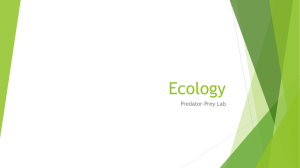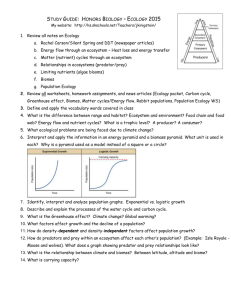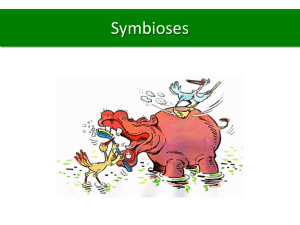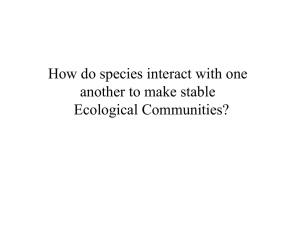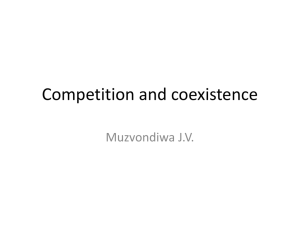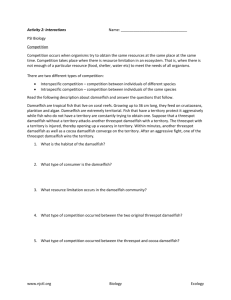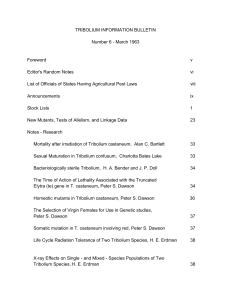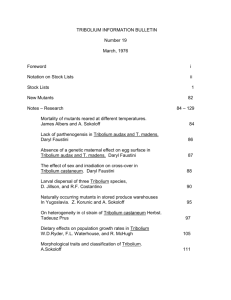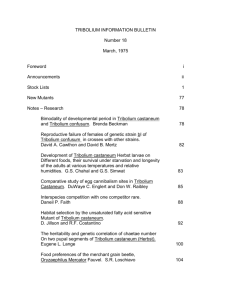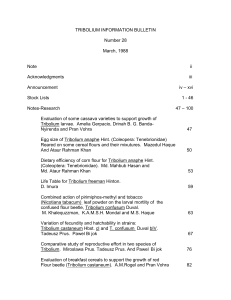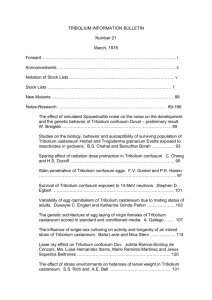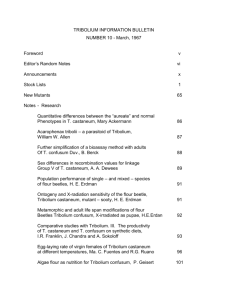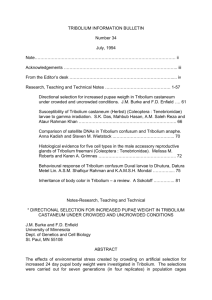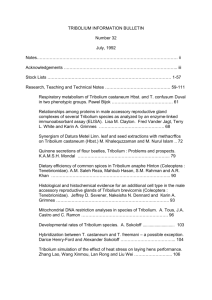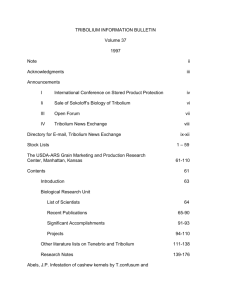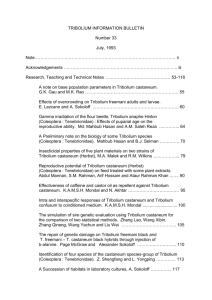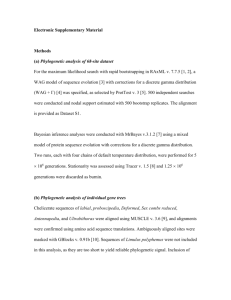Advanced Placement Biology 2002-2003
advertisement
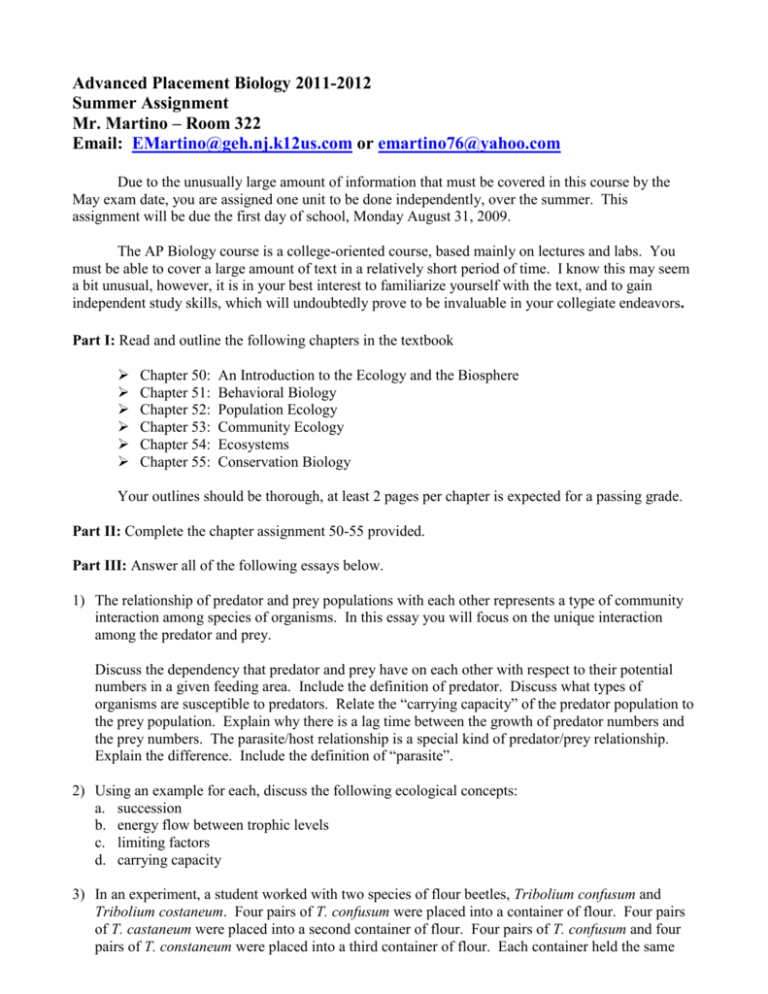
Advanced Placement Biology 2011-2012 Summer Assignment Mr. Martino – Room 322 Email: EMartino@geh.nj.k12us.com or emartino76@yahoo.com Due to the unusually large amount of information that must be covered in this course by the May exam date, you are assigned one unit to be done independently, over the summer. This assignment will be due the first day of school, Monday August 31, 2009. The AP Biology course is a college-oriented course, based mainly on lectures and labs. You must be able to cover a large amount of text in a relatively short period of time. I know this may seem a bit unusual, however, it is in your best interest to familiarize yourself with the text, and to gain independent study skills, which will undoubtedly prove to be invaluable in your collegiate endeavors. Part I: Read and outline the following chapters in the textbook Chapter 50: Chapter 51: Chapter 52: Chapter 53: Chapter 54: Chapter 55: An Introduction to the Ecology and the Biosphere Behavioral Biology Population Ecology Community Ecology Ecosystems Conservation Biology Your outlines should be thorough, at least 2 pages per chapter is expected for a passing grade. Part II: Complete the chapter assignment 50-55 provided. Part III: Answer all of the following essays below. 1) The relationship of predator and prey populations with each other represents a type of community interaction among species of organisms. In this essay you will focus on the unique interaction among the predator and prey. Discuss the dependency that predator and prey have on each other with respect to their potential numbers in a given feeding area. Include the definition of predator. Discuss what types of organisms are susceptible to predators. Relate the “carrying capacity” of the predator population to the prey population. Explain why there is a lag time between the growth of predator numbers and the prey numbers. The parasite/host relationship is a special kind of predator/prey relationship. Explain the difference. Include the definition of “parasite”. 2) Using an example for each, discuss the following ecological concepts: a. succession b. energy flow between trophic levels c. limiting factors d. carrying capacity 3) In an experiment, a student worked with two species of flour beetles, Tribolium confusum and Tribolium costaneum. Four pairs of T. confusum were placed into a container of flour. Four pairs of T. castaneum were placed into a second container of flour. Four pairs of T. confusum and four pairs of T. constaneum were placed into a third container of flour. Each container held the same amount of flour and was kept under the same environmental conditions. The table below indicated the results of the experiment over a nine-month period. Population of Organisms Per Container Months 1 2 3 4 5 6 7 8 9 10 11 T. confusum Container #1 8 18 32 48 70 85 40 35 20 T. castaneum Container #2 8 16 46 58 88 109 60 43 15 T. confusum T. castaneum Container #3 8 14 26 25 15 10 0 8 19 40 50 75 90 50 25 5 a) Make a prediction as to the population of each container for the tenth and eleventh months. b) Explain the factors operating in containers #1 and #2 to produce the results. c) Discuss the possible causes for the observed results in container #3. 4) Interdependence in nature is illustrated by the transfer of energy through trophic levels. The diagram below depicts the transfer of energy in a food web of an arctic shore located of the coast of Alaska. a) Choosing organisms from four different trophic levels of this food web as examples, explain how energy is obtained at each trophic level. b) Describe the efficiency of energy transfer between trophic levels and discuss how the amount of energy available at each trophic level affects structure of the ecosystem. c) If cells in the dead terrestrial plant material washed into the lake a commercially produced toxin, what would be the likely effects of this toxin in the food web? Explain. 5) Define and explain how each of the following contributes to social behavior. a) pecking order b) territoriality c) traveling in herds or packs d) altruistic behavior 6) Numerous environmental variables influence plant growth. Three students each planted a seedling of the same genetic variety in the same type of container with equal amounts of soil from the same source. Their goal was to maximize their seedling’s growth by manipulating environmental conditions. Their data are shown below: Plant Seedling Mass (grams) Day 1 Day 2 Student A 4 24 Student B 5 35 Student C 4 64 a) Identify three different environmental variables that could account for differences in the mass of the seedlings at day 30. Then choose one of these variables and design an experiment to test the hypothesis that your variable affects growth of the seedlings. b) Discuss the results you would expect if your hypothesis is correct. Then provide a physiological explanation for the effect of your variable on plant growth. AP Biology Chapter Assignment 50-55 Due Date: September 30, 2011 Chapter 50 1) Describe the relationship between ecology and evolution. 2) Describe how environmental changes may produce behavioral, physiological, morphological, or adaptive responses. 3) Construct a table that describes the major characteristics of the major biomes: tropical forest, savanna, dessert, chaparral, temperate grassland, temperate forest, taiga, and tundra. Chapter 51 1) Explain the difference between innate and learned behaviors. 2) Describe a fixed-action pattern and a sign stimulus. 3) Explain the nature versus nurture controversy. 4) Define habituation. 5) Discuss imprinting, imprinting stimulus, and critical period. 6) Describe and define kinesis, taxis, and migration. 7) Describe optimal foraging strategies in terms of energetics and prey densities. Chapter 52 1) Describe the characteristics of populations which exhibit Type I, Type II, and Type II survivorship curves. 2) List and explain how density-dependent and density-independent factors affect population growth. 3) Explain how predation can affect life history through natural selection. Explain how age structure, generation time, and sex structure of populations can affect population growth. Chapter 53 1) Explain the relationship between species richness, relative abundance, and diversity. 2) Explain how interspecific competition may affect community structure. 3) List and describe adaptations prey may use to avoid predators. 4) Distinguish between primary succession and secondary succession. 5) Describe how predators use mimicry to obtain prey. 6) Distinguish between parasitism, commensalism, and mutualism. Chapter 54 1) List and describe the importance of the four consumer levels found in an ecosystem. 2) Explain why primary productivity declines at each trophic level. 3) Describe the hydrologic (water) cycle. 4) Describe the carbon cycle. 5) Describe the nitrogen cycle. 6) Explain why the soil in tropical forests contains lower levels of nutrients than soil in temperate forests. 7) Explain why toxic compounds usually have the greatest effect on top-level carnivores. Chapter 55 1) Describe the goal of conservation ecology. 2) List the major threats to biodiversity and give an example of each.
